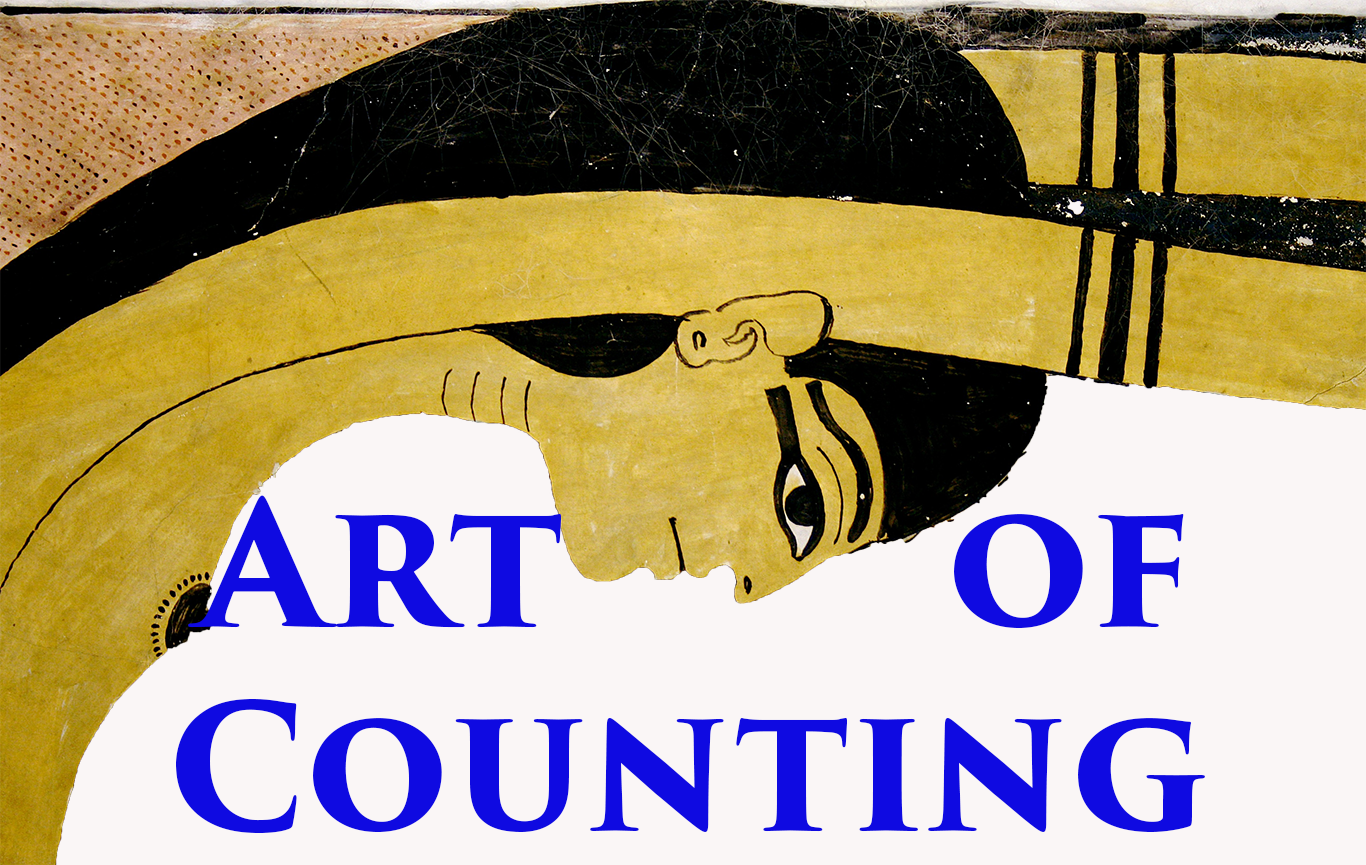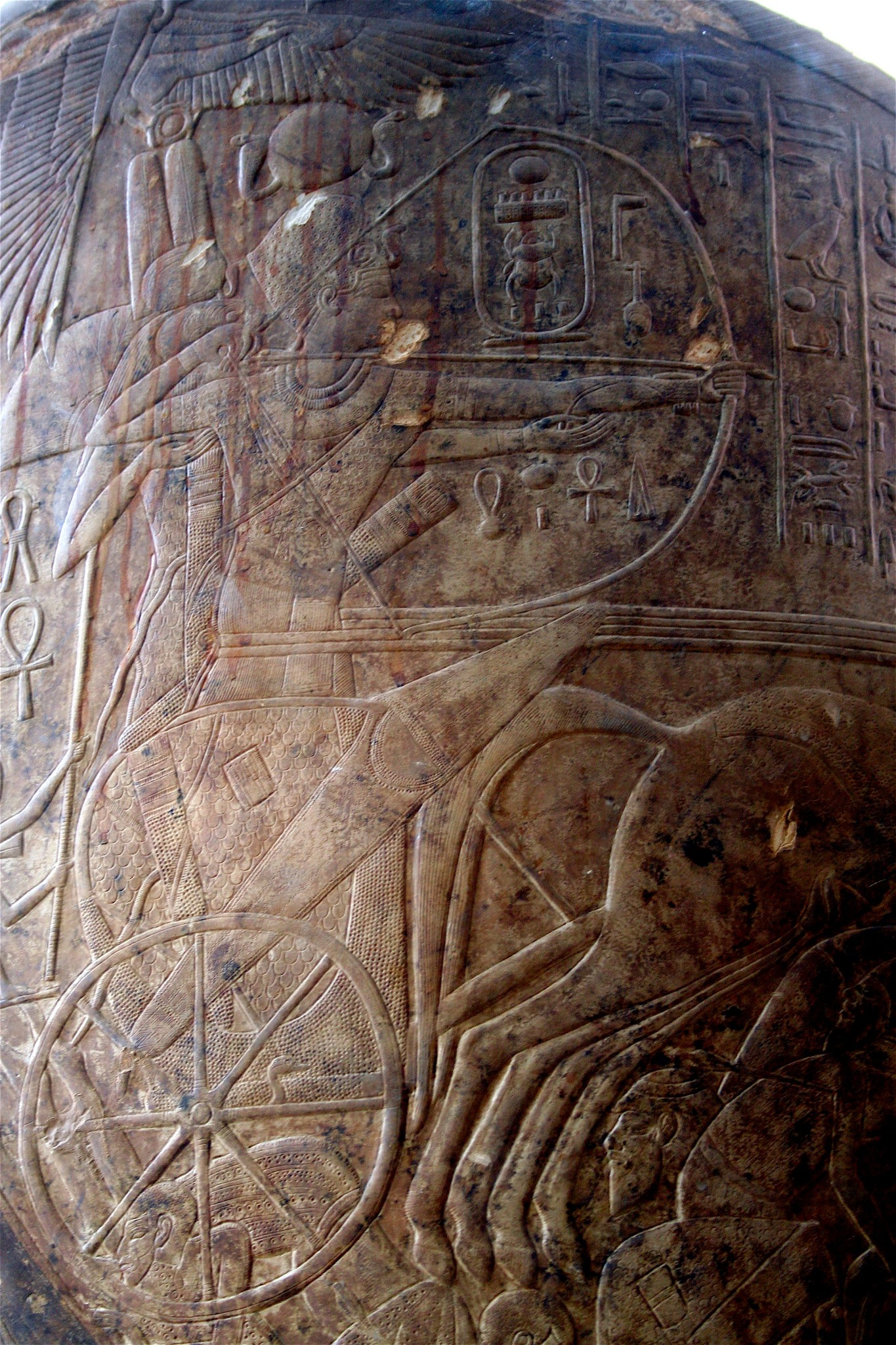It is with immense pleasure that I announce the forthcoming publication of my article “Vehicle of the Sun: The Royal Chariot in the New Kingdom”. This substantial investigation into the iconographic significance of the king’s chariot in ancient Egypt will appear in the Proceedings of the First International Chariot Conference, edited by André J. Veldmeijer and Salima Ikram.
Drs. Veldmeijer and Ikram are co-directors of the Egyptian Museum Chariot Project, which has been scouring the Egyptian Museum in Cairo and uncovering incredible pieces of leather from their massive collection almost lost to the dust.
During the 2008 season of the Egyptian Leatherwork Project in the Cairo Museum we came upon a cache of leather objects. This cache consisted of several trays of red and green leather containing some 60 large and numerous small leather fragments, all under a single JE and SR number. This acquisition was purchased from the dealer Georges Tano in 1932.
Upon investigating the contents of these trays, we realized that they all came from a single chariot, including portions of the bow-case and quiver that were attached to either side. These last two objects are elaborately decorated in green and red leather. Based on the decoration of the leather and the technology used to achieve these effects, it seems to date from sometime between the late 18th Dynasty and the end of the 19th Dynasty, although this needs to be further investigated.
The find is very rare and unusual: only a handful of complete chariots are known from ancient Egypt, and of these, only one heavily restored one in Florence, and that of Yuya and Tjuiu in the Egyptian Museum, have any significant amount of leather, albeit largely undecorated, preserved.
This past December, the First International Chariot Conference was organized and held in Cairo. Unfortunately, I was unable to attend this fascinating conference–chariots have long been a strong area of research interest; my MA thesis completed under the direction of Stephen Harvey was focused on the symbolism of the chariot body found in the tomb of Tuthmose IV and for some time I had been revising this text to publish as an article. This revised article was reviewed and commented on by not only Dr. Harvey, but also Katherine Eaton and David O’Connor, who provided immensely valuable insight and guidance to this research.
Despite my inability to attend the conference, Dr. Veldmeijer suggested that I submit the manuscript to their proceedings and, to my great delight, it was accepted for this prestigious and ideal venue.
Abstract
This paper will focus on the symbolic importance of the royal chariot later in the New Kingdom, using the chariot body discovered in the tomb of Tuthmose IV as the basis for discussion. A detailed examination of the iconography of this vehicle, taken together with evidence from other royal chariots and the texts that refer to the pharaoh in his chariot in general, will suggest layers of significance for these vehicles. There is a strong use of solar imagery tied to the chariot, and it also appears to have connections to the akhet and with the maintenance of cosmic order and regeneration. Relief evidence points to the use of the chariot as a mobile throne on the field of battle. Moreover, important elements of the iconography of chariot decoration are shared with thrones, windows of appearance, palanquins, and royal barks—all venues for royal appearance. Of particular interest are the aggressively apotropaic and potentially powerful terrestrial focus of the scenes on the chariot body of Tuthmose IV, which suggests that the ritual significance of these vehicles was always balanced by their importance and functions in the real world. The iconography surrounding the king was particularly complex and a number of royal iconographic themes appear intertwined on this chariot. Beyond the aggressively protective elements designed to guard the king against his enemies (both terrestrial and celestial), these include a heavy emphasis on the king’s solar connections, symbols relating to his place in the Egyptian cosmic view, and indications of the pharaoh embodying and merging with certain deities in particular contexts, with the chariot itself acting as a conduit for this interaction.
The chariot body from the tomb of Tuthmose IV is covered with extremely detailed and intricate relief.

Detail of the right exterior scene on the chariot of Tuthmose IV showing the king firing his bow while being guided and supported by the falcon-headed war deity Montu
Using these scenes in conjunction with other surviving chariot equipment, relief depictions, and textual references, the article outlines the multiple layers of significance attached to these vehicles. The royal chariot was not only a prestigious manner of transportation, but it also served a transformative function allowing pharaoh to “become” incarnations of different deities for different contexts. While it served a function in the terrestrial world, shielding the king physically, the vehicle also supported his role as maintainer of cosmic order and as the “Dazzling Sun”. It was used as a venue for royal appearance and shared many characteristics with thrones and Windows of Appearance. The specific iconography on the Tuthmose IV chariot body also links the vehicle to primal cosmic regeneration.

Diagram showing the layout of the scenes on the chariot of Tuthmose IV
The publication of the Proceedings should appear later this year.


